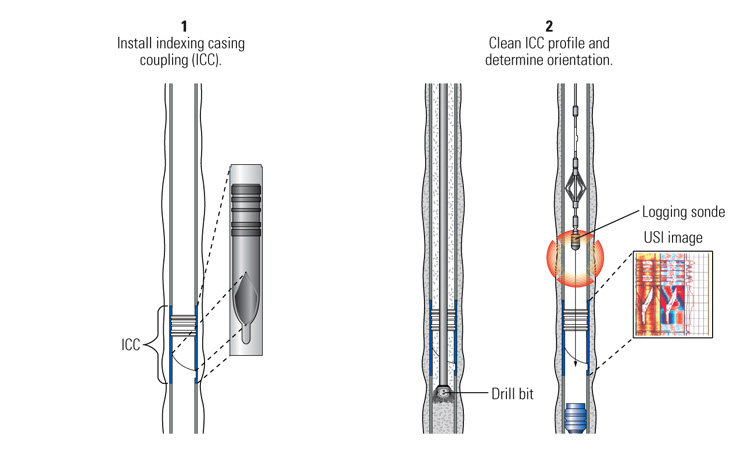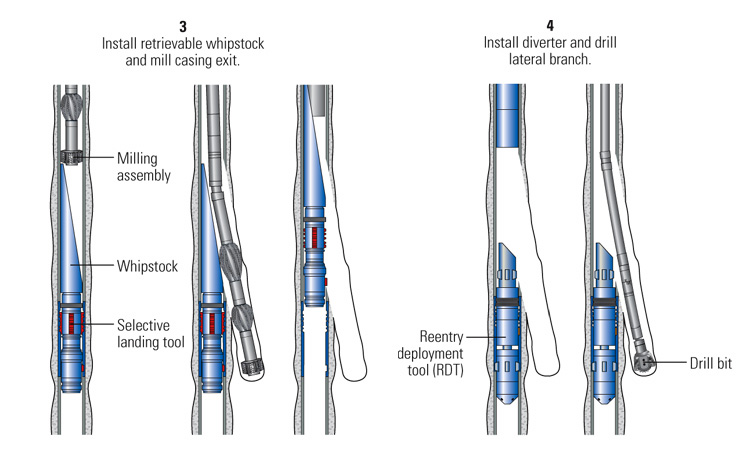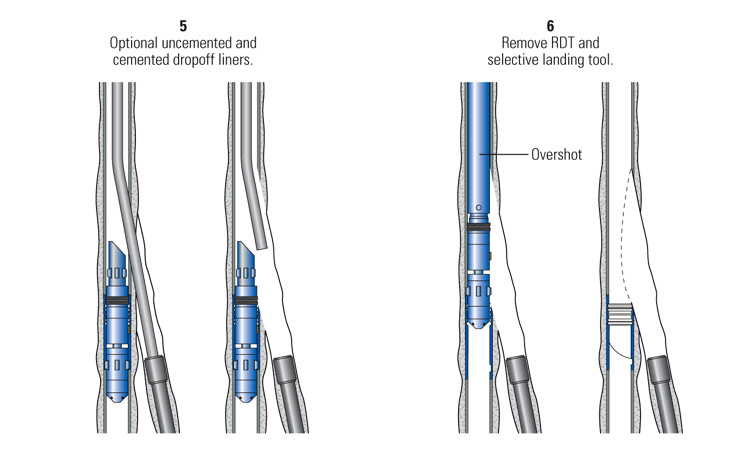

|

|

|
Milling Casing Windows
The RapidAccess system uses an indexing casing coupling (ICC) installed
in the primary casing to mill exit windows for openhole laterals.
The fullbore ICC serves as a permanent depth and directional orientation
reference for drilling or reentry operations, allows conventional
cementing operations and provides a platform for constructing RapidConnect
and RapidExclude junctions.
A two-stage process using a whipstock followed by a special reentry
deployment tool (RDT) improves window milling and junction construction
compared with systems that just use a whipstock. The RDT outside diameter
is smaller and easier to retrieve than standard equipment, which minimizes
debris and tool-retrieval problems after drilling. Redundant tool-retrieval
features further ensure access to lower laterals.
Wireline or measurements-while-drilling (MWD) tools determine ICC depth
and directional orientation so a selective landing tool can orient
the whipstock and milling assembly in a specific direction. The ICC
position also can be determined from USI UltraSonic Imager log data
acquired during CBT Cement Bond Tool evaluations, eliminating one logging
run.
| |